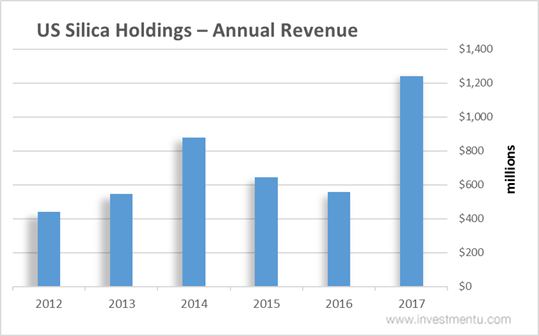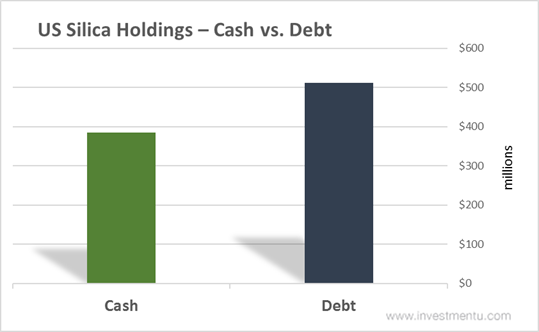US Silica (NYSE:SLCA) stock had a rough day in the market on Monday March 26. Shares dropped -4.11% and closed the day at $25.06. They're now trading 50.28% below their 52-week high of $50.39.
With today's big drop, US Silica now has a market cap of just over $2 billion. That barely makes it a mid-cap company.
The business operates in the diversified minerals industry and employs 2,202 people. Its shares trade primarily on the New York stock exchange.
US Silica has 80.54 million shares outstanding and 3.7 million traded hands for the day. That's above the average 30-day volume of 3.4 million shares. The amount of US Silica stock is also dropping as the company buys back its own shares. In the last 12 months, it repurchased $4 million worth.
Over the last five years, US Silica's revenue is up by 180.79%. You can see this growth in annual revenue chart below.

In the last year alone, US Silica's revenue has grown by 121.73%. That's a solid sign for US Silica stock owners.
We like to invest in companies that grow their sales. A growing top line is a sign of a healthy business.
For now, US Silica will continue to pull in revenue. So let's take a closer look at the company's total financial health. And the best way to do that is by looking at its balance sheet. US Silica's cash comes in at $385 million and the company's debt is $512 million.

US Silica's cash pile is smaller than its total debt. This is common for many companies. They can issue debt at a lower cost to take on new projects.
What is US Silica Stock Worth?
To determine the value of US Silica stock let's look at a few key metrics:
Price-to-Earnings (P/E): This is one of the most widely used metrics and it comes in at 16.2. That's a reasonable level and, generally, the lower the better. Investors will bid up stock prices and in turn P/E ratios when they expect future earnings to grow.
Price-to-Book (P/B): This ratio is a cornerstone for value investors. A lower number here indicates a better value play. And at 1.45, US Silica looks reasonable, but P/B varies greatly based on the industry.
These two metrics are a great place to start when valuing a company, but your analysis should go much deeper.
